Related Research Articles
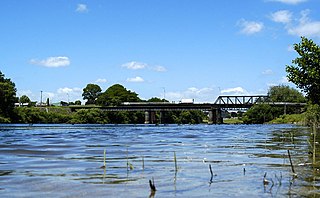
Ngāruawāhia is a town in the Waikato region of the North Island of New Zealand. It is located 20 kilometres (12 mi) north-west of Hamilton at the confluence of the Waikato and Waipā Rivers, adjacent to the Hakarimata Range. Ngāruawāhia is in the Hamilton Urban Area, the fourth largest urban area in New Zealand. The location was once considered as a potential capital of New Zealand.

Viaduct Harbour, formerly known as Viaduct Basin, is a former commercial harbour on the Auckland waterfront that has been turned into a development of mostly upscale apartments, office space and restaurants. It is located on the site of a formerly run-down area of the Freemans Bay / Auckland CBD waterfront in Auckland, New Zealand. As a centre of activity of the 2000 America's Cup hosted by the Royal New Zealand Yacht Squadron, as well as the 2022 Rally New Zealand, the precinct enjoyed considerable popularity with locals and foreign visitors.
The Auckland Rugby League (ARL) is the governing body for the sport of rugby league in the Auckland Region of New Zealand. Founded in 1909, the ARL has played a pivotal role in the development and promotion of rugby league in Auckland and beyond.

The 1888–89 New Zealand Native football team was a New Zealand rugby union team that toured Britain, Ireland, Australia and New Zealand in 1888 and 1889. It mostly comprised players of Māori ancestry, but also included some Pākehā. A wholly private endeavour, the tour was not under the auspices of any official rugby authority; it was organised by New Zealand international player Joseph Warbrick, promoted by public servant Thomas Eyton, and managed by James Scott, a publican. The Natives were the first New Zealand team to perform a haka, and also the first to wear all black. They played 107 rugby matches during the tour, as well as a small number of Victorian Rules football matches in Australia. Having made a significant impact on the development of New Zealand rugby, the Natives were inducted into the World Rugby Hall of Fame in 2008.
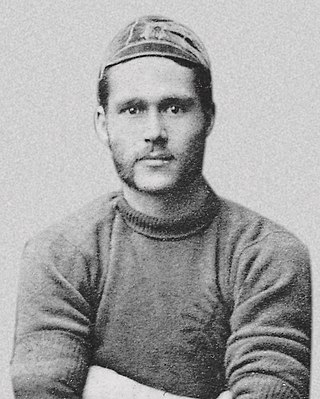
Joseph Astbury Warbrick was a Māori rugby union player who represented New Zealand on their 1884 tour to Australia and later captained the 1888–89 New Zealand Native football team that embarked on a 107-match tour of New Zealand, Australia, and the British Isles.

Thomas Rangiwahia Ellison, also known as Tamati Erihana, was a New Zealand rugby union player and lawyer. He led the first New Zealand representative rugby team organised by the New Zealand Rugby Football Union (NZRFU) on their 1893 tour of Australia. Ellison also played in the 1888–89 New Zealand Native football team on their epic 107-match tour, scoring 113 points, and 43 tries with the side.
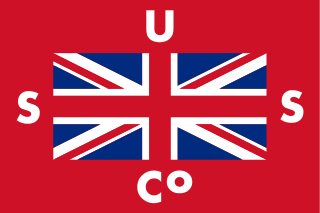
Union Steam Ship Company of New Zealand Limited was once the biggest shipping line in the southern hemisphere and New Zealand's largest private-sector employer. It was incorporated by James Mills in Dunedin in 1875 with the backing of a Scottish shipbuilder, Peter Denny. Bought by shipping giant P&O around the time of World War I it was sold in 1972 to an Australasian consortium and closed at the end of the twentieth century.
Cyril Geoffrey Edmund Harker was a New Zealand soldier, lawyer and politician of the National Party.
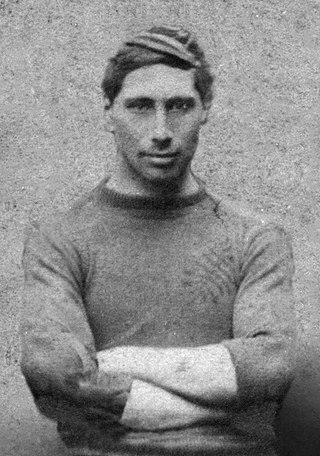
John Grey Taiaroa, of Ngāi Tahu descent, was a New Zealand rugby union player. A halfback, he played nine matches for New Zealand in 1884—the warm-up in Wellington and all eight matches of the tour of New South Wales; New Zealand won all eight games. There were no test matches on the tour, as Australia did not play their first test match until 1899. Taiaroa was the highest try scorer of the tour.

Patrick Keogh, also known as Pat Keogh or Paddy Keogh, was a New Zealand rugby union footballer who toured with the 1888–89 New Zealand Native football team. Playing at half-back, Keogh was considered the star player on the tour, which was the first by a Southern Hemisphere team to the British Isles. He played in at least 70 of the team's 107 matches in the British Isles, Australia and New Zealand. After playing for Dunedin club Kaikorai from 1884, he was selected to represent his province of Otago from 1887, and played for them against the touring British Isles team in 1888. By this time Keogh had established himself as the outstanding half-back in New Zealand, and he was approached by Joe Warbrick to tour with the Native team in mid-1888.
Thomas Banks was an English rugby footballer who played in the 1880s and 1890s. He played at representative level for British Isles, and Lancashire, and at club level for Swinton, as a half-back, three-quarters, or forward.
Arthur Warbrick, was a New Zealand sportsperson who as a rugby footballer toured with the 1888–89 New Zealand Native football team. The touring party played a variety of football games, including rugby union, association football and Victorian rules football. Warbrick was one of six brothers, four of whom followed Warbrick on the 1888 tour to Britain, Ireland and Australia.

David Richmond Gage was a New Zealand rugby union footballer. He played with the 1888–89 New Zealand Native football team, and represented New Zealand in 1893, and once in 1896 when he captained the side.

George Albert Williams, also known as Bully Williams, was a New Zealand rugby union player who toured with the 1888–89 New Zealand Native football team to the British Isles and Australia. Williams was one of five non-Māori players in the Natives' side.

The Northern Steam Ship Company Ltd (NSS) served the northern half of the North Island of New Zealand from 1881 to 1974. Its headquarters, the Northern Steam Ship Company Building, remains in use on Quay Street, Auckland as a bar and is listed by Heritage New Zealand as a Category I Historic Place.

William Warbrick was a New Zealand rugby union footballer who toured with the 1888–89 New Zealand Native football team on their 107-match tour of New Zealand, Australia, and the British Isles. Playing at fullback, he was one of five Warbrick brothers who participated in the tour, which was captained and organised by his half-brother Joe.
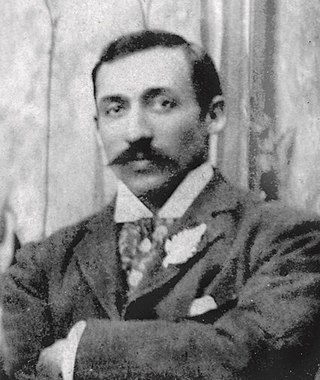
William Thomas "Tabby" Wynyard was a rugby union footballer who toured with the 1888–89 New Zealand Native football team and the 1893 New Zealand team. He also played first-class cricket for both Wellington and Auckland.
Frederick Warbrick was a rugby union footballer who toured with the 1888–89 New Zealand Native football team on their tour of the British Isles, New Zealand, and Australia. The Natives tour was captained and organised by Fred Warbrick's brother Joe, who had played with the New Zealand team on their 1884 tour of New South Wales. Joe Warbrick eventually selected 26 players for the team, which consisted mostly of Māori or part-Māori, but also several European "Pakeha". Along with Joe and Fred there were three other Warbrick brothers in the side: Alfred, Arthur, and Billy.

George Holdship (1839–1923) emigrated to Auckland in 1855 and became a businessman, mainly involved in timber logging and sawmills. His companies removed much of North Island’s native forest, initially kauri and later kahikatea. He moved to Sydney in 1913.
References
- ↑ "Edward McCausland". ESPNcricinfo. Retrieved 20 July 2013.
- 1 2 "Obituary". The New Zealand Herald. paperspast.natlib.govt.nz. 27 January 1890. Retrieved 21 July 2013.
- ↑ "Obituary". Auckland Star. paperspast.natlib.govt.nz. 26 November 1936. Retrieved 21 July 2013.
- ↑ "Football". The New Zealand Herald. paperspast.natlib.govt.nz. 18 August 1883. Retrieved 20 July 2013.
- ↑ "Football Notes". Auckland Star. paperspast.natlib.govt.nz. 5 August 1886. Retrieved 20 July 2013.
- ↑ "Football Notes". Aroha News. paperspast.natlib.govt.nz. 13 April 1889. Retrieved 20 July 2013.
- 1 2 "The Native Play a Splendid Game". The Daily Telegraph. paperspast.natlib.govt.nz. 9 July 1888. Retrieved 20 July 2013.
- ↑ Ryan 1993, p. 28.
- ↑ Ryan 1993, p. 136.
- ↑ Ryan 1993, p. 108.
- ↑ Ryan 1993, pp. 146–147.